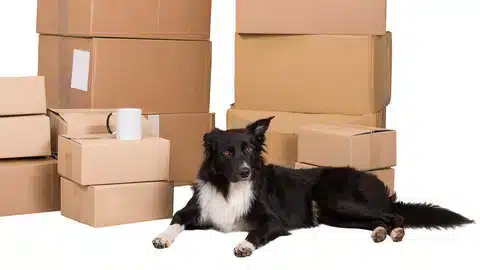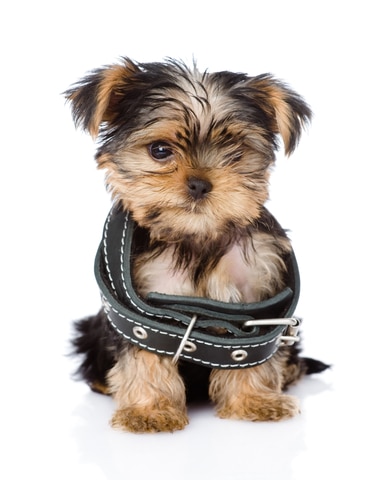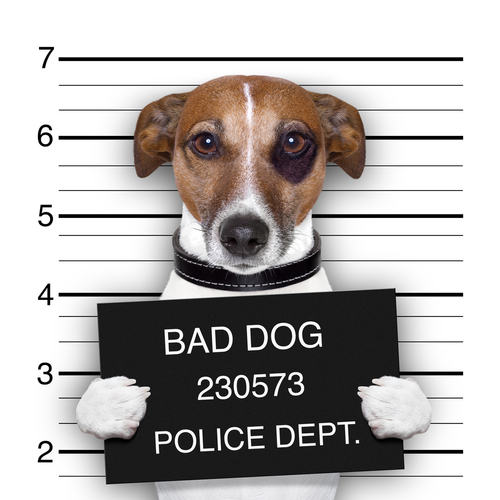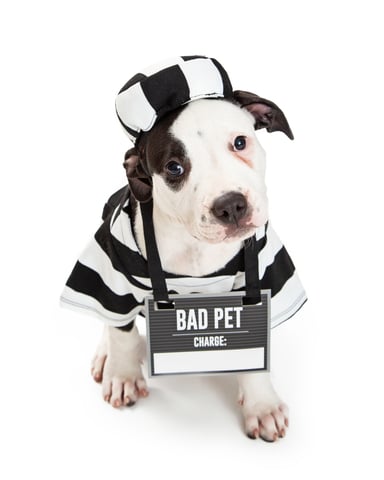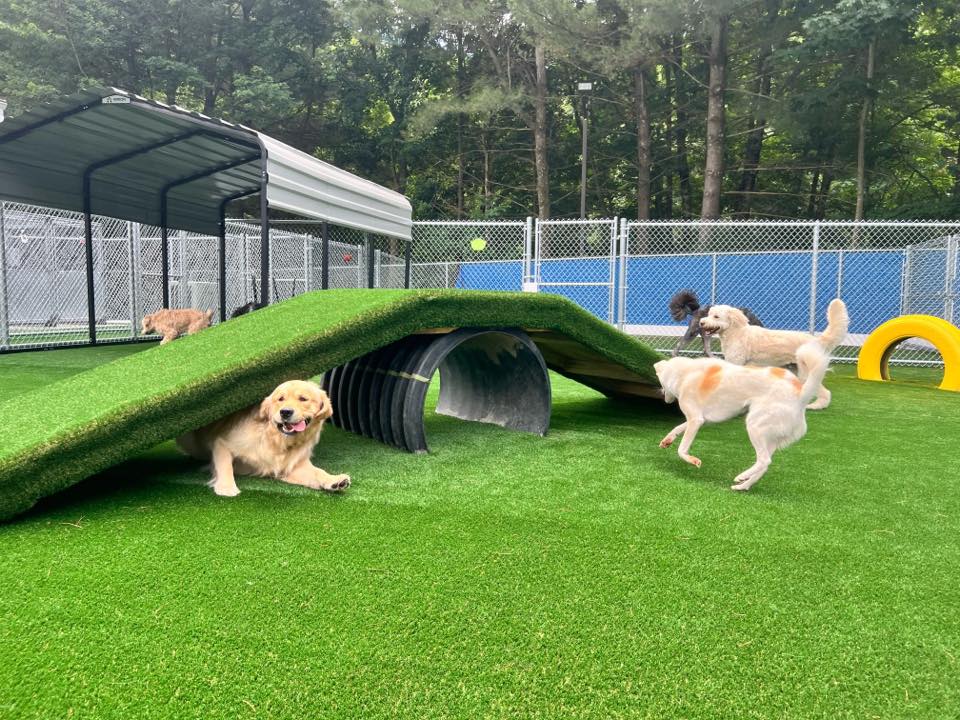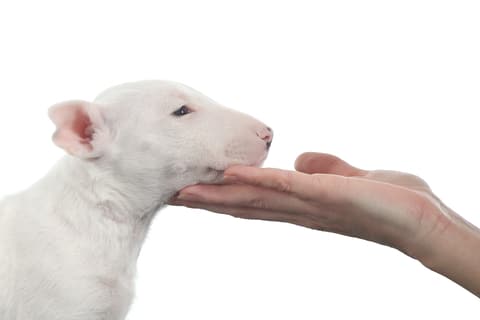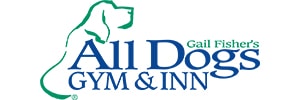Adding a puppy to a multi-dog household
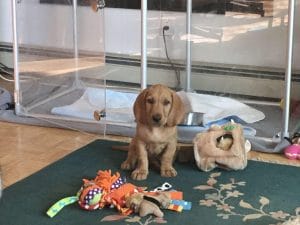
IT’S BEEN a little over a week since I picked Brio up in South Carolina, and he and Larry were introduced to each other. Seven-year-old Larry has been a wonderful “big brother” to then 9-week old Brio. He plays with him gently, lets Brio jump on him and chomp on him, and he tires the puppy out. Seeing how well Larry has adjusted makes me so very happy.
At 10 weeks old, Brio is in what is called the “human socialization period,” that extends from seven to 12 weeks of age. This is an important window of opportunity for socialization with humans and other new species, situations and objects, so I’m trying to introduce Brio to a wide variety of new places, people and things in this short time frame.
Regarding people, interestingly, dogs do not generalize the human species as they do their own species. A dog can recognize the body language and communication of other dogs, regardless of breed. They’ll understand the body language of a Chinese crested, a French bulldog or a Hungarian vizsla. They know how to communicate with and recognize that an English mastiff and an Italian spinoni are both dogs. But a dog does not automatically recognize an infant as human or associate all sizes, shapes, ages, races and genders as members of our species.
This lack of generalization means that a puppy that never sees a baby may not tolerate an infant when the dog is an adult. A dog that has socialized solely with women may react fearfully to a tall, bearded man as if it’s a different species, or never having seen a particular ethnicity, may react as if the dog is a bigot. He isn’t! It’s just that a dog’s socialization, must include a variety of people ranging in age, size, gender, ethnicity, plus variations in facial hair, clothing, hats, glasses and the like. The greater the variety of people the puppy meets and has positive interaction with, the better. Ethologist Eberhardt Trumler wrote: “During these vital weeks the dog gradually acquires an imprint not of a (person) but of (people).”
It’s also important to provide the puppy with lots of new experiences during this short time frame. Unfortunately, because of COVID, opportunities to visit friends and have people over to visit are limited. I’m doing my best to provide broad range of positive experiences that will help Brio grow up to be a well-rounded, stable dog. The other side of this coin is lack of socialization, which can result in a dog that is afraid of people or new places.
Brio is totally normal in using his mouth to investigate virtually everything within reach, much the way human babies do. When Brio mouths my hands, I help him learn the lesson of “bite limitation” or “bite inhibition,” that is, don’t bite hard. If he applies too much pressure, I react with “Ouch!!” startling him into removing his mouth from my hand.
This is also the ideal time for a puppy to learn the “rules of the home” with simple, positive training. Brio and I are attending our Puppy Essentials class to develop the partnership and relationship of working together. Puppy classes also presents an opportunity to meet new people, new dogs, and to experience new environments — the ideal formula for optimum socialization during this period.
One caveat during this time frame is called the “fear impact period” which occurs sometime between eight and 11 weeks of age. This is a time when if the puppy experiences something painful or traumatic it may be generalized. The impact on the dog is far more profound than that same experience occurring at a different age. It is how the puppy perceives the experience, not what the person thinks of it that matters. For example, the puppy is riding in the back seat of the car when the driver makes a sudden stop and the puppy hits the back of the seat and lands on the floor. The puppy’s owner may not even remember this event and won’t think of it as causative when, the next day, the puppy is afraid of getting into the car — a fear that may last throughout the dog’s life. In fact, it is often not until much later, when trying to determine the cause of a dog’s uncharacteristic fear, that the owner may remember a significant event. I want to make sure that Brio has as many positive, new experiences as I can create for him, while doing my best to protect him from anything that might be physically traumatic.
As Brio enters future critical periods of development, I’ll write about how we’re handling it together.
